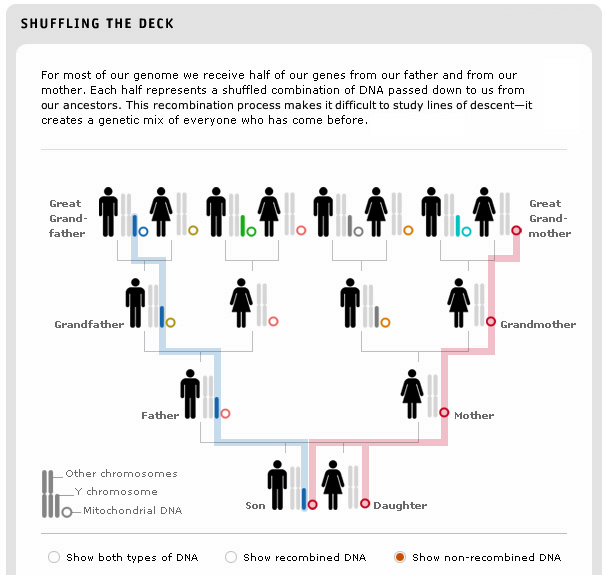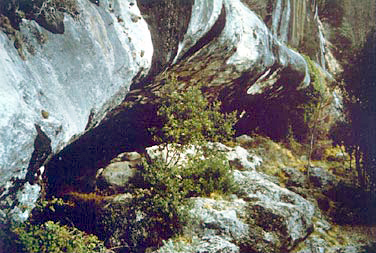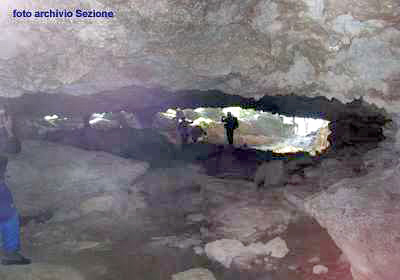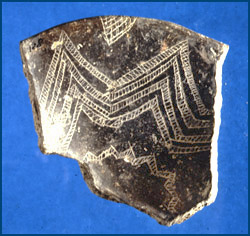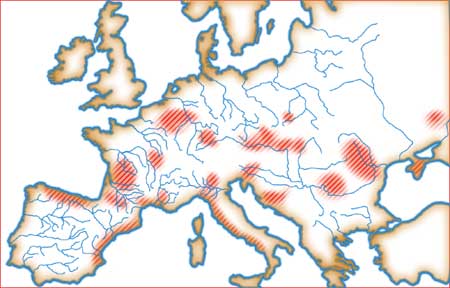DNA Analysis of the Bonuccelli Genetic Line!
About a year ago, a good friend informed me of an exciting project being undertaken by the National Geographic Society. Called the Genographic Project, it was using the newly available technology of affordable DNA sequencing to analyze the migratory evolution of the human species. Simply put, they were testing people of every race and country on the globe to figure out WHEN and WHERE the first human appeared, and when and where the humans then spread to every corner of the planet.
It's possible to do this because of slight mutations which occur during the passing of genetic information over generations. Since only men have Y chromosomes, there are parts of the Y chromosome that get passed as an exact copy from fathers to sons. Over time slight mutations creep into these identical copies, and it's possible to analyze groups of people and see which mutations are common to which peoples, thereby telling us at what point in the genetic evolution groups of peoples migrated where. So as you can see, the Y chromosome can give us information about a boy's father's father's father's fathers back into time. The same mutations can be traced through mitochondrial DNA for a girl's mother's mother's mothers back through time.
At the same time, Luca Santini of the City of Camaiore had been schooling me, during various trips to Italy, about huge caves in the mountains above Montecastrese which he had partially excavated when younger. At the end of the Bonuccelli Reunion in September 2005, I had a chance to hike with Luca Santini to one of the more famous caves above Camaiore - Grotta all'Onda - to see for myself. Some of these caves (Grotta del Tambugione, Tanaccio, Pianacce, Penna Buia, Grotta all'Onda, Buca del Corno, etc.) housed the remains and implements of Cro-Magnon peoples who had come to Europe around 35,000 years ago and eventually , through competition for resources like food, caused the extinction of the Neandertals. Neandertals were an evolutionary dead-end, but Cro-Magnons thrived in the region and eventually peopled much of Europe. The Cro-Magnon Aurignacian peoples of 25,000 years ago mostly represent the genetic types such as Basques and Celts, but there were pockets of such peoples along the Tuscan coast too, among other places. The Etruscans were also an ancient people of Italy, but a bit different line from the ancestors of the Basques and Celts. Luca was interested to know if we might find the Bonuccelli line was connected more closely to the Celts or the Etruscans.
A kit for genetic testing costs $100, and about 6 months ago I couldn't wait any longer. I swabbed my cheek and mailed in the packet and waited. As I am male and my last name is Bonuccelli, theoretically a DNA test for my Y chromosome would trace back to my great grandfather Vincenzo Bonuccelli from Camaiore all the way back to the ancestor Bonuccelluo who moved from Montecastrese to Camaiore in 1226 and even back further to the male progenitor of the Bonuccelli line.
6 weeks later I had my results, posted in a secure page on the National Geographic website. I can confirm that the Bonuccelli line is a member of the R1b (M343) genetic haplogroup. This group traces directly back to Cro-Magnon cave dwellers of northern Italy and is a common haplogroup with the Basques and Celts! Therefore anyone in our family tree can trace their genetic heritage back to this group. The test also mentioned it was likely my paternal group was not just R1b but R1b1, which is a more specific subset which describes the Cro-Magnon Aurignacian peoples I mentioned above who existed around 25,000 years ago in Tuscany and elsewhere. Click below for more info and genetic migration graphics.
Below I will post the full text of the genetic migration pattern for the R1b haplogroup as explained on the National Geographic website. If you would like more information, please CLICK HERE to visit the Genographic Project website - there is a wealth of info on how the DNA is sequenced and examined, the migration patterns of all the human groups on the planet and all haplogroups, and more. Also please CLICK HERE if you would like to order your own kit and have your own genetic analysis done! If you're a male Bonuccelli (with no known adoptions in your history), your results will mostly likely be an exact copy of mine - the exact same R1b (M343) haplogroup. But if you are female the results will trace back through your maternal family line and will likely be completely different! It's a really unique way to look at your long-term (25,000 years and more) family history!!!
In the meantime, I've registered for a more extensive DNA test for myself which will discern 37 mutation markers (as opposed to the 12 tested the first time) and should, therefore, help us identify the later descendents of the Aurignacian Cro-Magnons that the Bonuccellis seem to have descended from. The project hopes to delve more specifically into each haplogroup - dividing the mutations down even further, so in the next few months we could potentially have more information on the Bonuccelli ancestry connecting us to around 5000 years ago.

